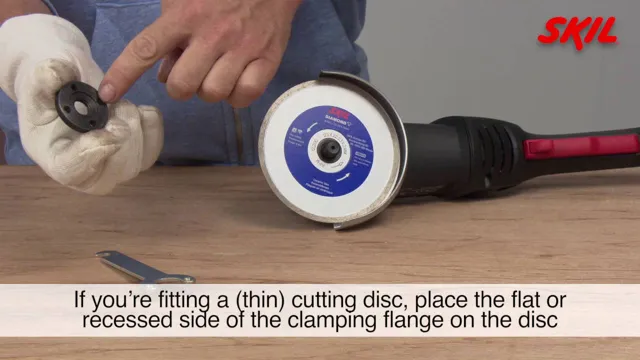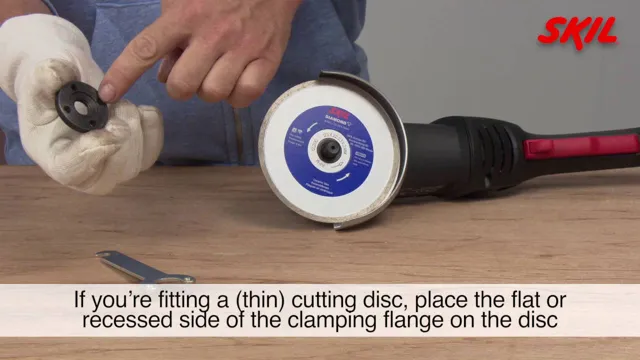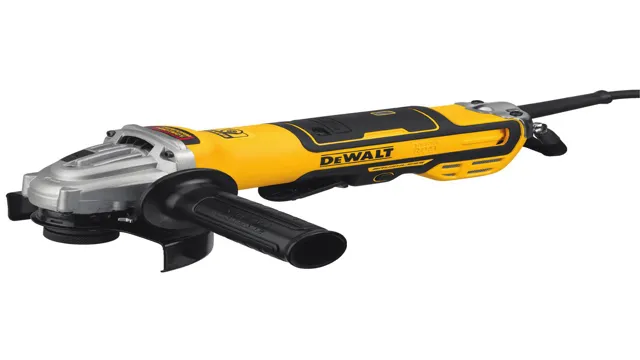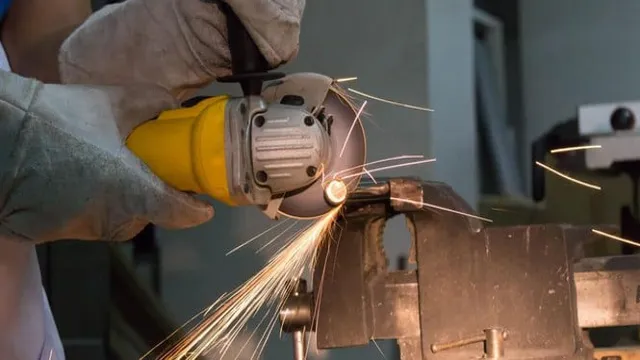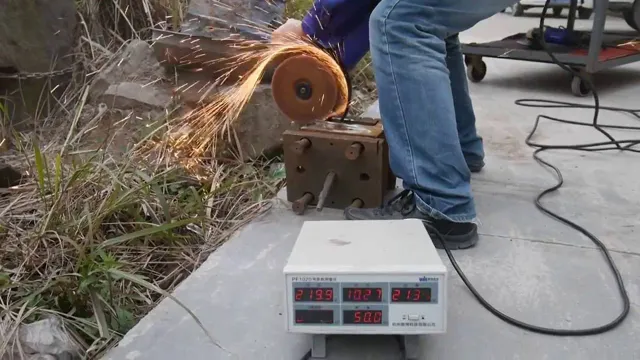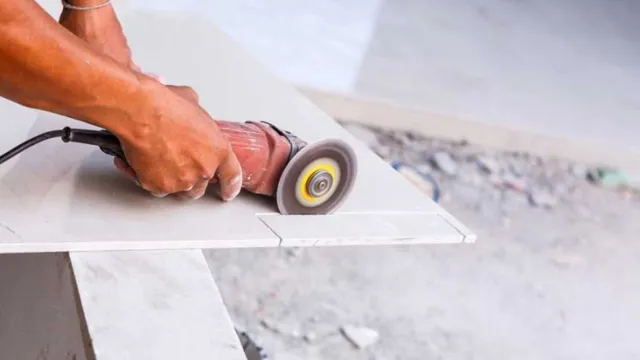Can Angle Grinder Cut Brick? Discover the Pros and Cons of Using an Angle Grinder for Brick Cutting.
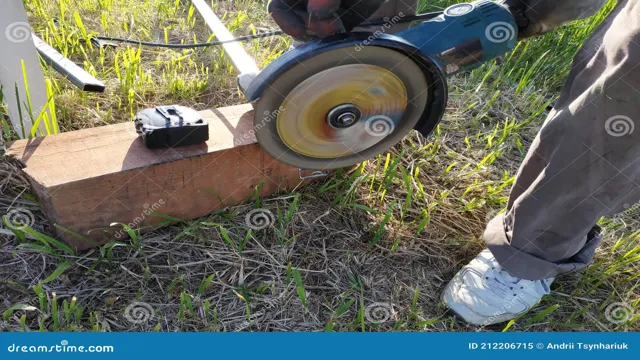
If you’re looking to cut through bricks, but aren’t sure which tool to use, you might be wondering whether an angle grinder is up to the task. Angle grinders are powerful tools that can be used for a variety of cutting and grinding tasks, but can they cut through brick? The short answer is yes, an angle grinder can easily cut through brick, but there are a few things to keep in mind before you get started. In this blog post, we’ll take a closer look at whether or not angle grinders are the best tool for cutting through brick, and what you need to know before you start your project.
So, grab your safety glasses and let’s dive in!
Understanding Angle Grinders
Yes, an angle grinder can cut brick. Angle grinders are power tools with a rotating disc that is capable of cutting, grinding, and polishing various materials, including bricks. However, it is important to use the right type of blade for the job.
A diamond-tipped blade is recommended for cutting bricks as they are highly durable and can withstand the intense heat and friction created while cutting through brick. It is also essential to wear the proper safety gear, including eye protection and a dust mask when cutting bricks with an angle grinder as it produces a lot of dust. Lastly, make sure to plan and mark the cut carefully before starting the job to ensure precision and accuracy.
What is an angle grinder?
An angle grinder is a versatile tool commonly used in the construction and metalworking industries. It’s a handheld power tool that features a spinning abrasive disc, which can be swapped out for different attachments depending on the task at hand. The most commonly used attachment is a cutting wheel, which is used to cut through various materials such as metal, stone, and concrete.
The angle grinder’s compact design allows it to be used in tight spaces, making it an ideal tool for jobs such as cutting pipes or removing paint. It can also be used for grinding and polishing tasks, with the assistance of different attachments. Understanding how to use an angle grinder safely and effectively is crucial, as misuse can result in serious injury or damage to the material being worked on.
So, it’s essential to follow instructions and safety guidelines when using an angle grinder. By doing so, the user can achieve great results while ensuring personal safety.
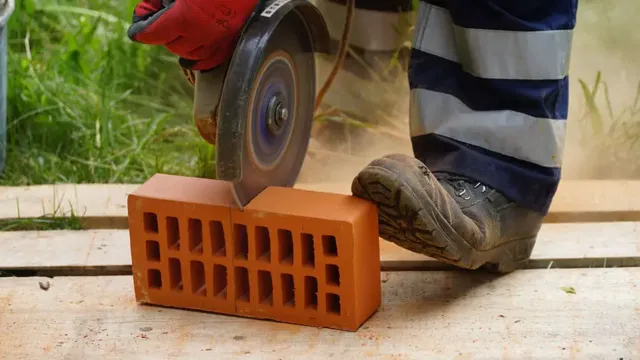
How does it work?
Angle grinders are versatile power tools that are popular amongst DIY enthusiasts and professionals alike. They are handheld devices that use a rotating disc or wheel to cut, grind, and polish various materials. Angle grinders work by using a strong motor to rotate a spindle, which holds the cutting or grinding attachment.
The speed of the motor determines the speed of the spindle, which in turn determines the speed of the disc or wheel. The user can adjust the angle of the grinder to achieve different cutting depths, and can also switch out the disc or wheel to adapt to various tasks. It is essential to wear appropriate safety gear, including eye protection and gloves when operating an angle grinder.
Overall, angle grinders are a powerful and versatile tool that can save time and effort in a variety of projects, but it is essential to use them carefully and responsibly.
Types of Discs for Angle Grinders
Angle grinders are versatile tools that can be used for a variety of tasks, including cutting, grinding, and polishing. However, the type of disc you use will depend on the task at hand. There are many different types of discs available for angle grinders, each with its own unique characteristics and uses.
Some of the most common types include abrasive grinding discs, diamond cutting discs, polishing pads, and wire brush wheels. Abrasive grinding discs are typically used for grinding and smoothing rough surfaces, while diamond cutting discs are designed for cutting hard materials such as concrete and stone. Polishing pads are used for achieving a smooth and glossy finish on surfaces such as metal, glass, and stone, while wire brush wheels are used for cleaning and removing rust and paint from metal surfaces.
Understanding the different types of discs available can help you to choose the right one for your specific task, ensuring the best results possible.
Cutting Brick with an Angle Grinder
Yes, an angle grinder can certainly cut through brick! In fact, it’s a popular tool for masons and DIY enthusiasts looking to make precision cuts in their brick projects. However, it’s important to make sure you have the right type of blade and take proper safety precautions before getting started. Diamond blades are often the best choice for cutting through brick, as they’re durable and can handle the heat generated by the grinder.
It’s also important to wear goggles, gloves, and a mask to protect yourself from the dust and debris that will be kicked up during the cutting process. All in all, an angle grinder can be a powerful tool for cutting brick, but it requires proper preparation and safety measures to ensure a successful outcome.
Safety Precautions
When cutting brick with an angle grinder, it is important to take safety precautions to avoid injury and damage. Firstly, you should wear proper protective gear, including eye and ear protection, gloves, and a dust mask. You should also ensure that the workspace is clear of any obstacles that may cause tripping, and that other people are not in the immediate area.
It is recommended to use a diamond blade that is specifically designed for cutting masonry and to have a firm grip on the angle grinder at all times to prevent it from slipping. Additionally, it is important to avoid applying too much pressure, as this can cause the blade to overheat and potentially break. By following these safety measures, you can ensure a successful and injury-free brick cutting experience.
Materials Required
If you’re looking to cut bricks with an angle grinder, there are a few materials you’ll need to have on hand. First and foremost, you’ll need a good quality angle grinder and the appropriate cutting disc. Look for a diamond blade that’s designed for cutting bricks, as this will provide you with a clean, precise cut.
You’ll also want to have safety equipment on hand, including gloves, goggles, and a dust mask. Cutting bricks can produce a lot of dust, so it’s important to protect yourself from inhaling it. Finally, you’ll need a sturdy work surface and a clamp to hold the brick in place while you cut it.
Once you have all of these materials together, you’ll be ready to start cutting your bricks with an angle grinder. Remember to take your time and work carefully, ensuring that you’re following all necessary safety precautions.
Step-by-step Instructions
Cutting brick with an angle grinder is a simple DIY task that requires some knowledge and proper tools. First things first, you need to acquire an angle grinder and a diamond blade suitable for cutting brick. Once you have these tools, you can begin by measuring and marking the brick where you want to cut it.
Next, use a straight edge to create a guide line to ensure a precise cut. When you have your guide line, clasp the brick securely to a surface using a clamp or a vice. Double-check that the blade is securely fitted to the angle grinder before starting to cut.
Begin cutting the brick slowly, following the guide line that you created earlier. Ensure that you keep the angle grinder level to avoid unwanted cuts. Once you have completely cut through the brick, dust off any debris and remove the clamp or vice.
And there you have it! Cutting brick with an angle grinder is not as daunting as it may seem, and if you follow these simple instructions, you will be done in no time.
Conclusion
In conclusion, while an angle grinder can indeed cut through brick, it also has the potential to create a cloud of dust and debris that would make even Puff the Magic Dragon cough. So, if you’re planning to take on a DIY project that involves cutting bricks, make sure to wear protective gear and work in a well-ventilated area. And if you’re feeling particularly brave, you might even try singing “Puff the Magic Dragon” as you wield your trusty angle grinder.
Just be sure to hit those high notes before the dust starts flying!
FAQs
What type of blade should I use on an angle grinder to cut bricks?
You should use a diamond blade to cut through bricks with an angle grinder.
Can I use a regular cutting disc to cut bricks with an angle grinder?
It is not recommended to use a regular cutting disc as it may not be strong enough to cut through the hard surface of the brick.
Can I cut curved shapes in bricks using an angle grinder?
Yes, you can cut curved shapes in bricks using an angle grinder by following the curve carefully with the blade.
How do I make sure the bricks don’t crack while using an angle grinder to cut them?
To avoid cracks, make sure to mark the cutting line accurately and apply gentle but steady pressure while cutting.
Is it easy to control an angle grinder when cutting bricks?
It might take some practice to get comfortable controlling an angle grinder, but with proper technique, it can be done accurately and with ease.
Can an angle grinder be used on other masonry materials besides bricks?
Yes, an angle grinder can be used on other masonry materials like concrete, cement blocks, and tiles.
Do I need to wear protective gear when cutting bricks with an angle grinder?
Yes, it’s essential to wear protective gear like eye goggles, earplugs, dust mask, and gloves while operating an angle grinder to cut bricks.

